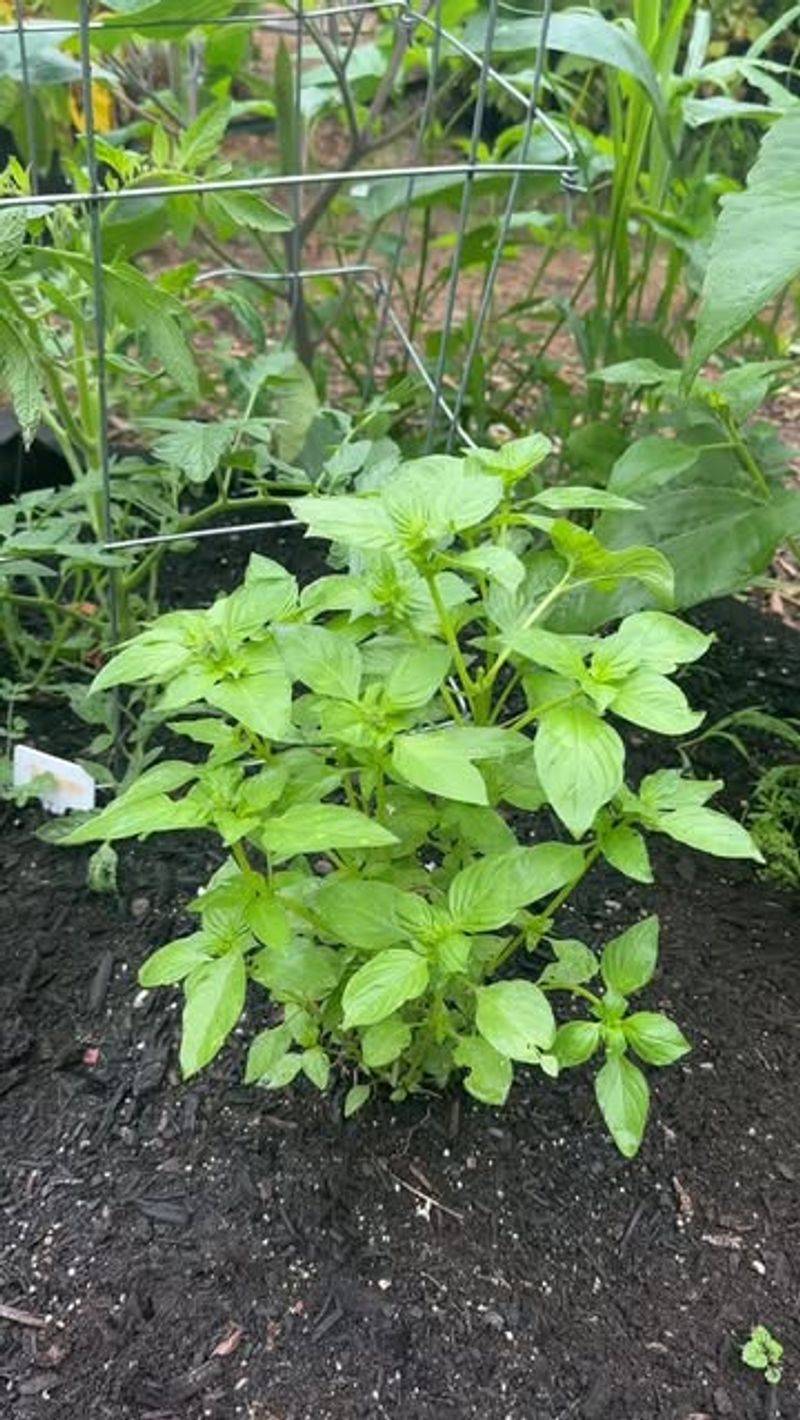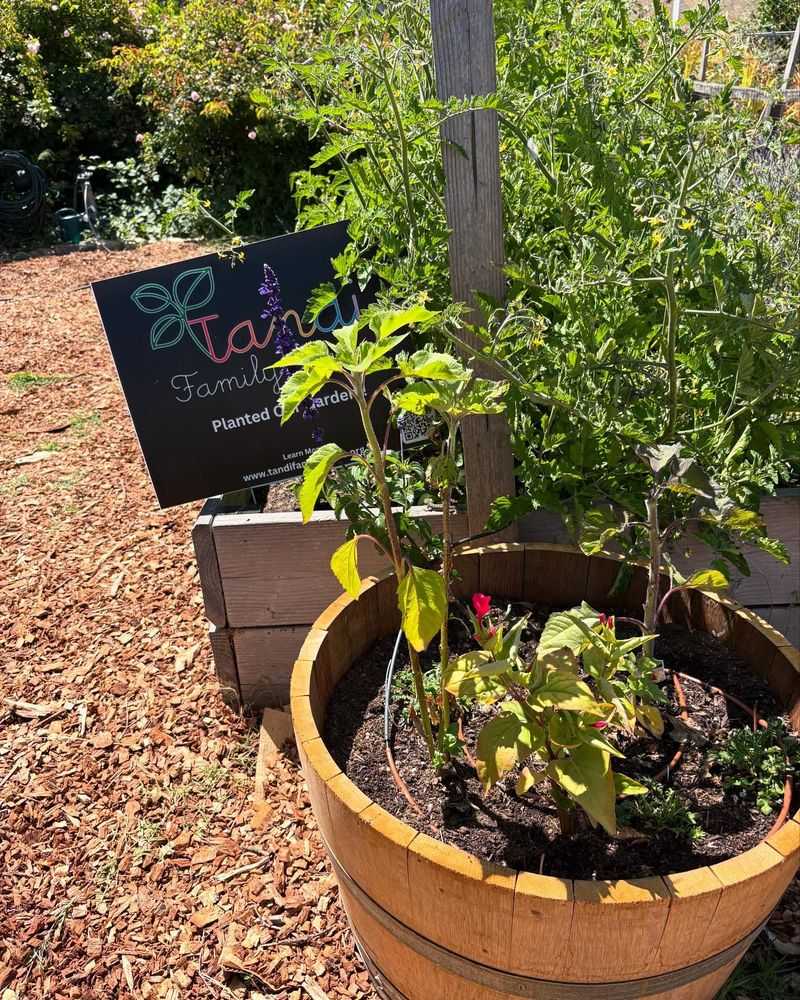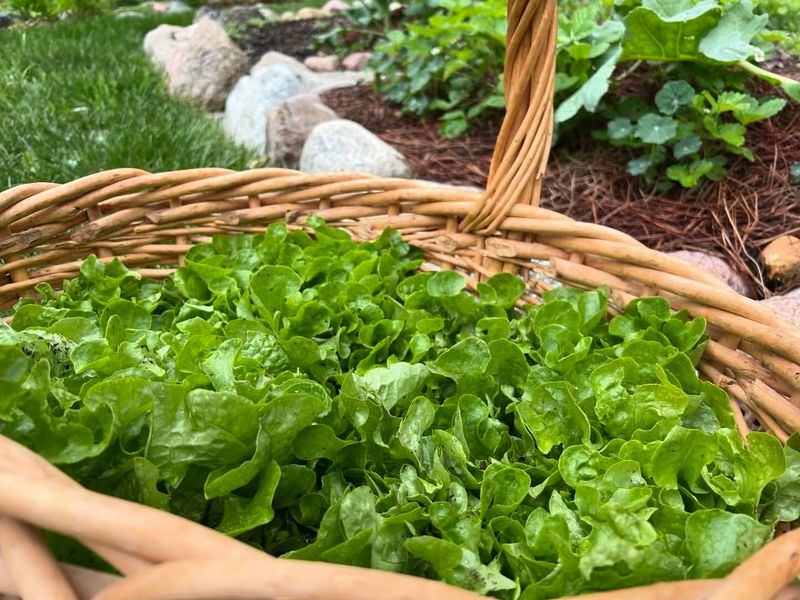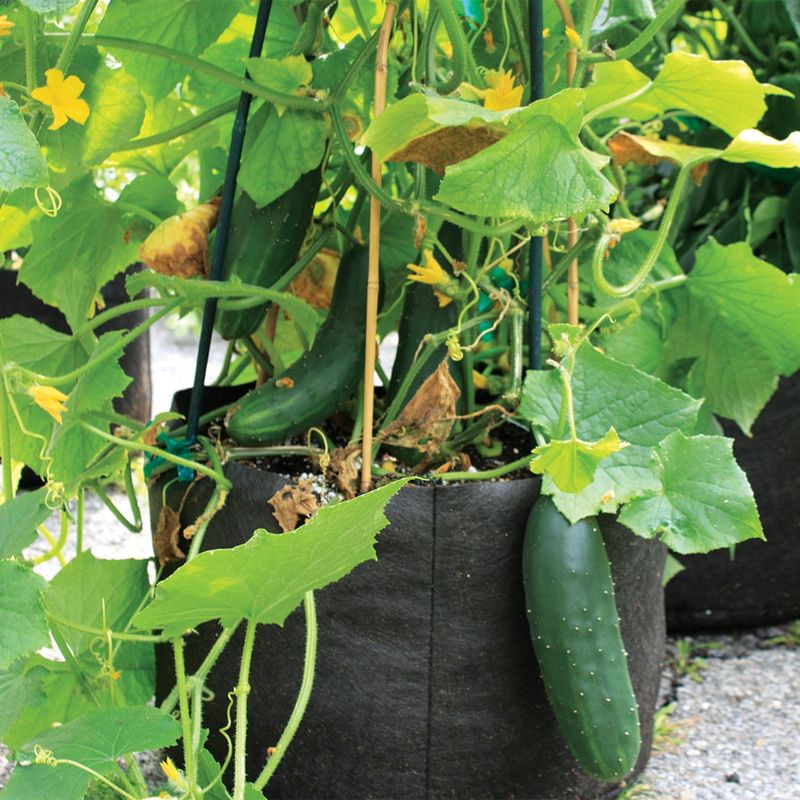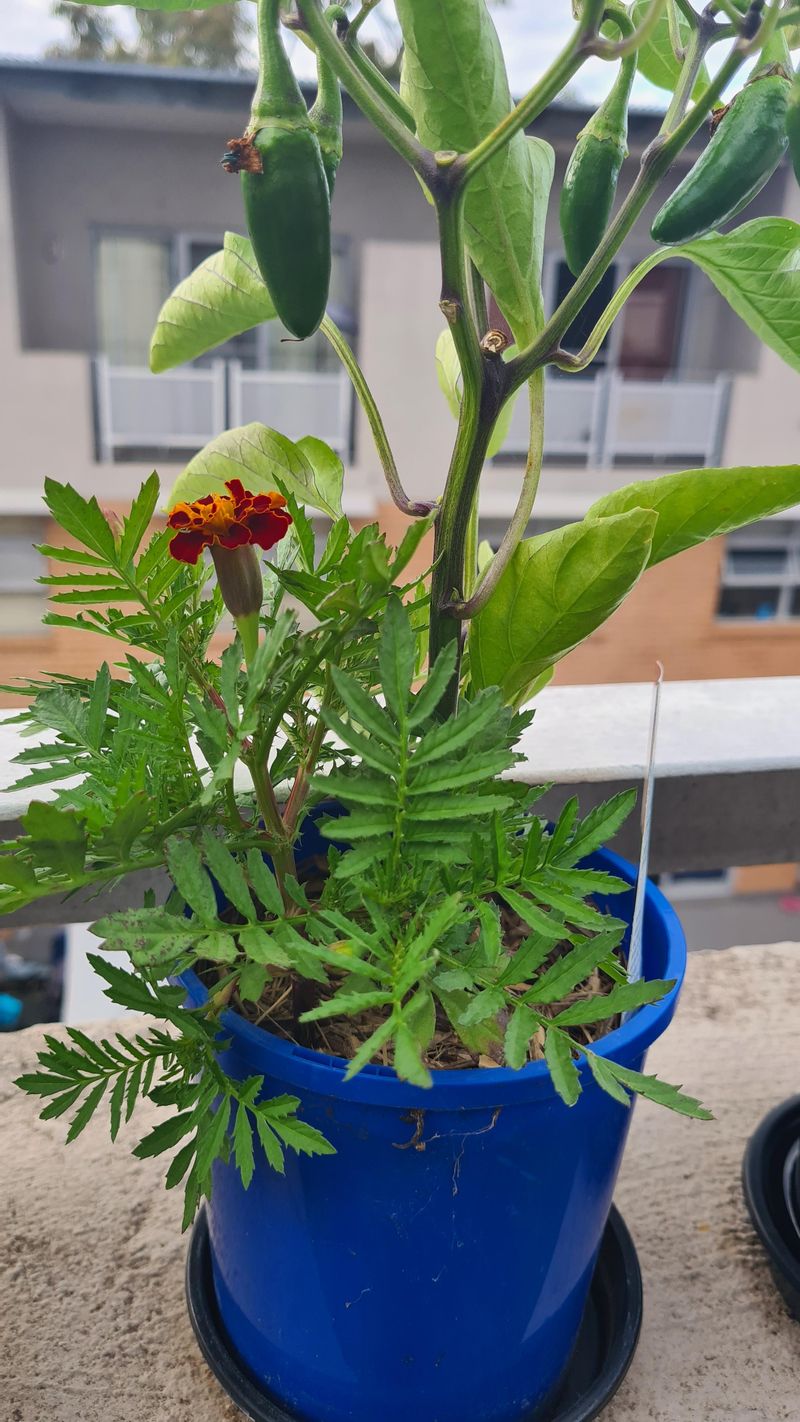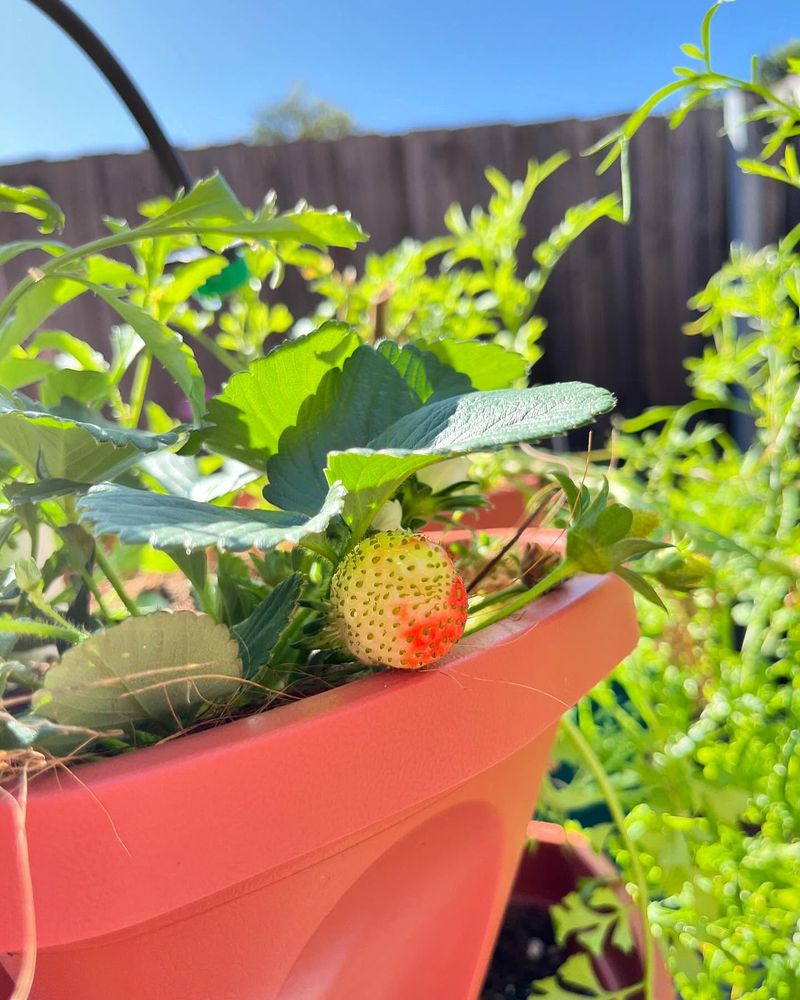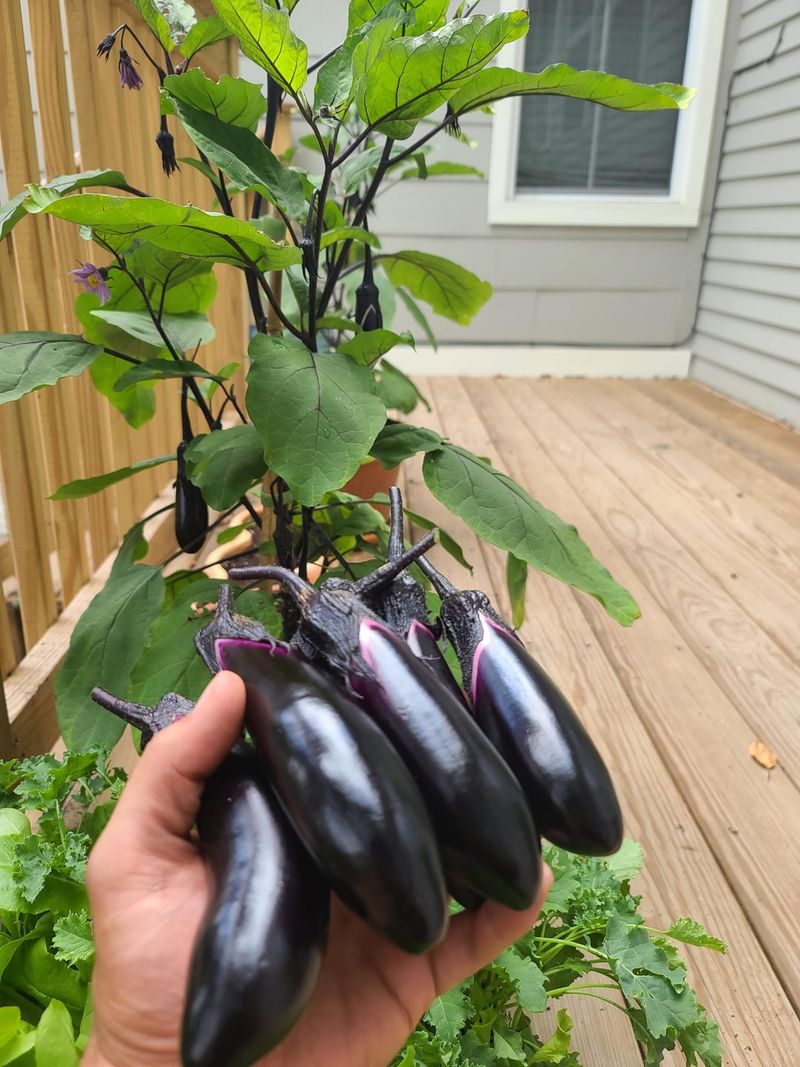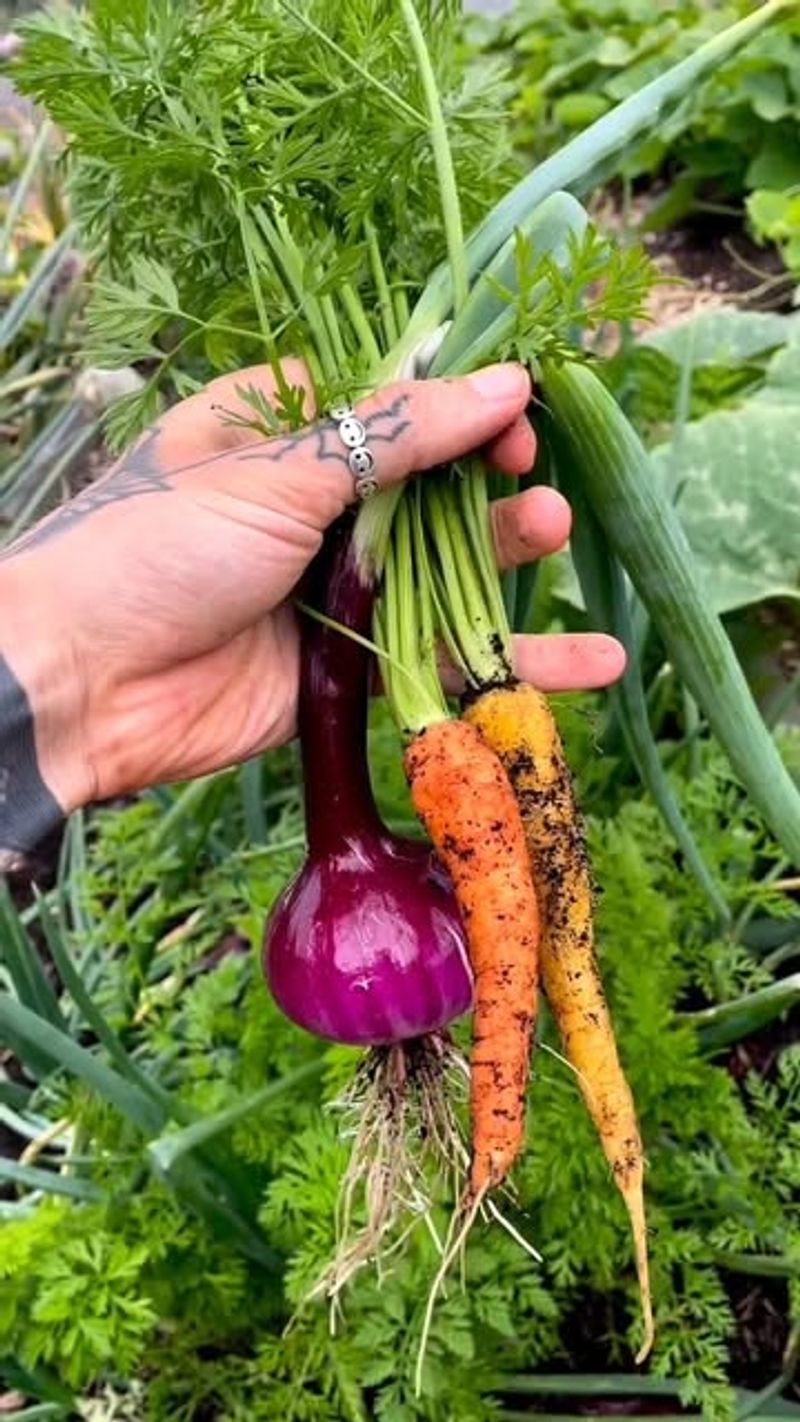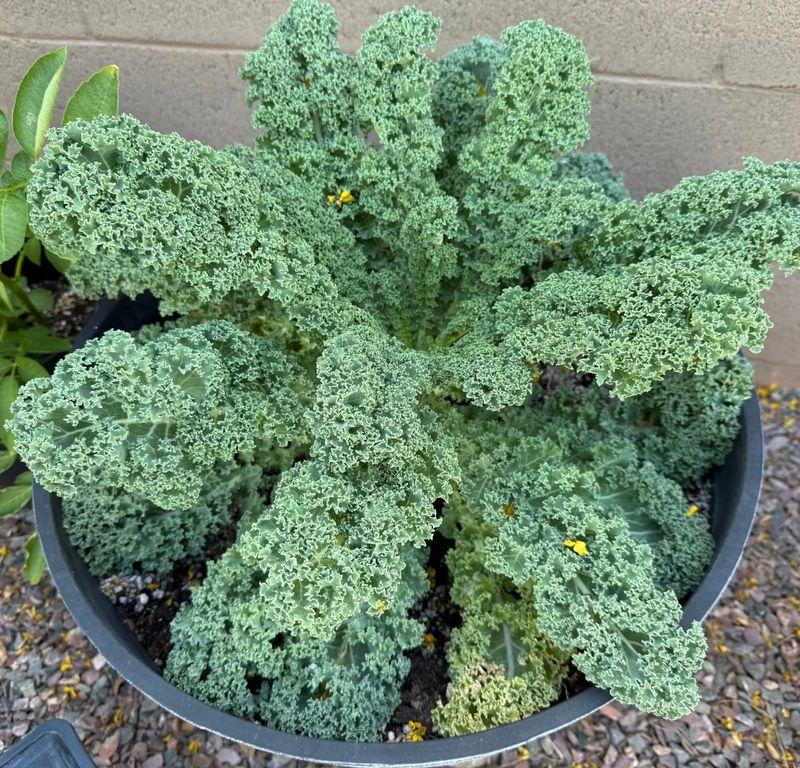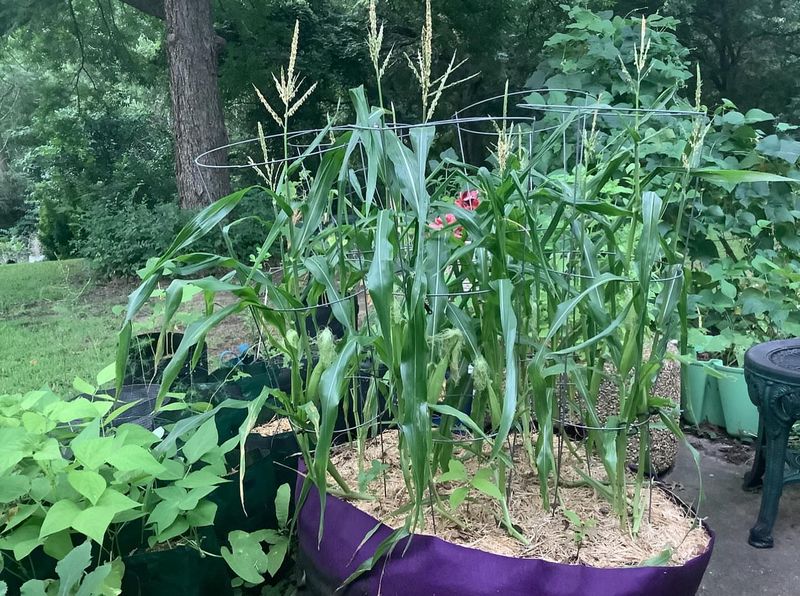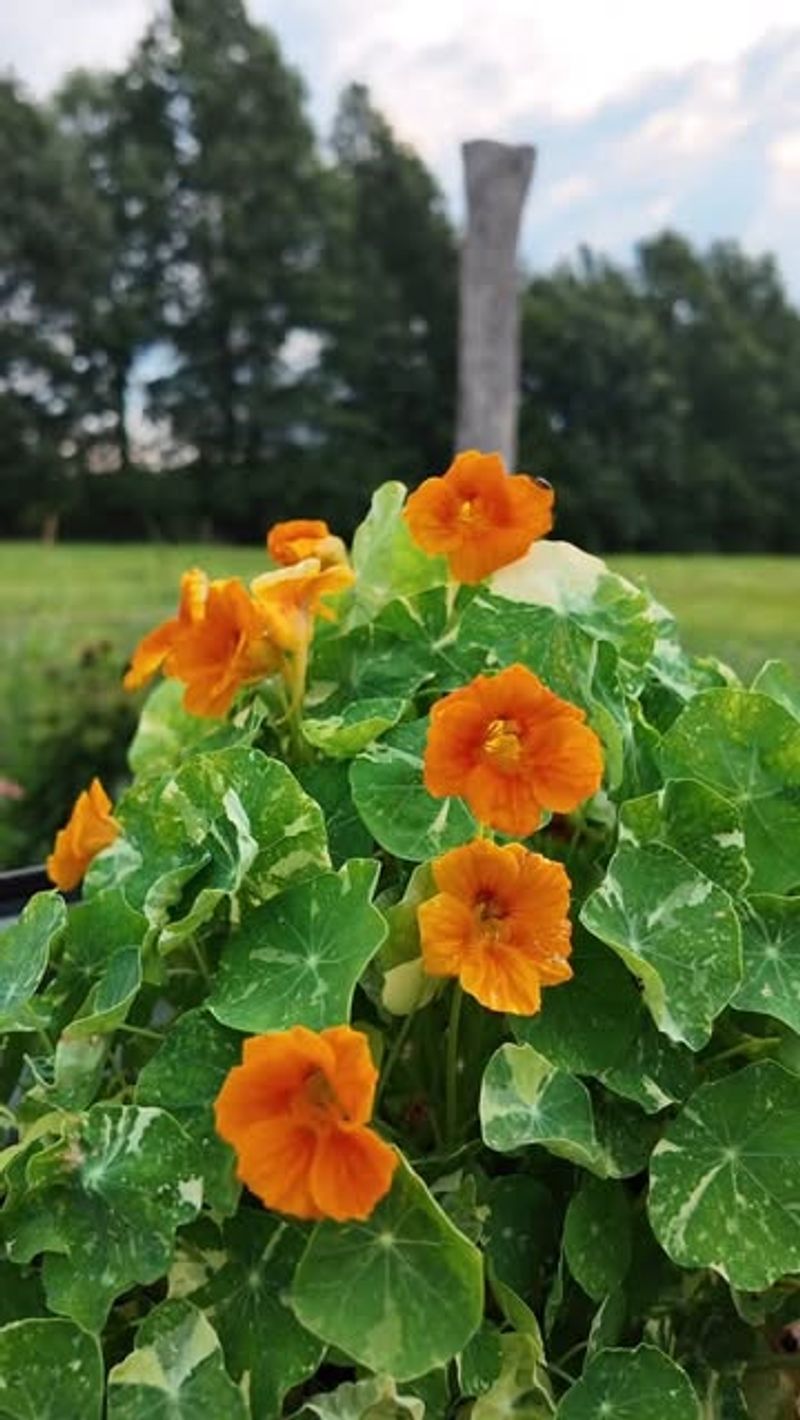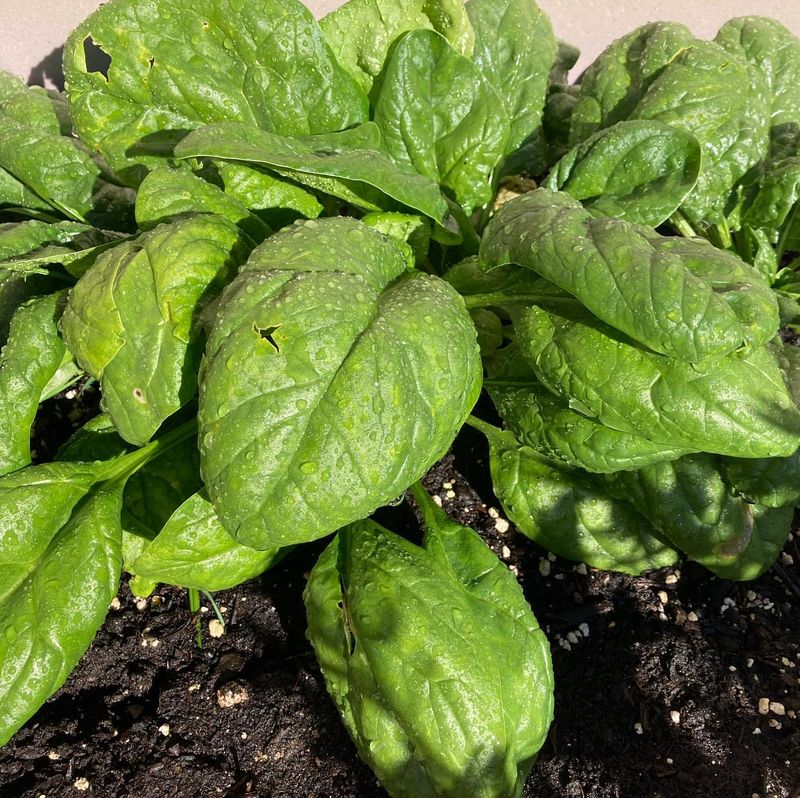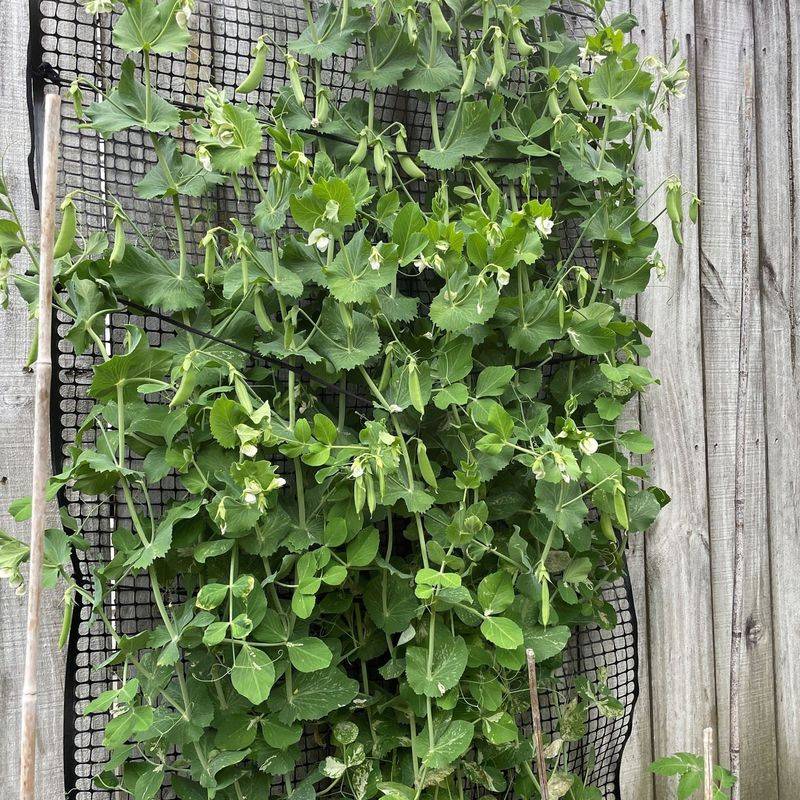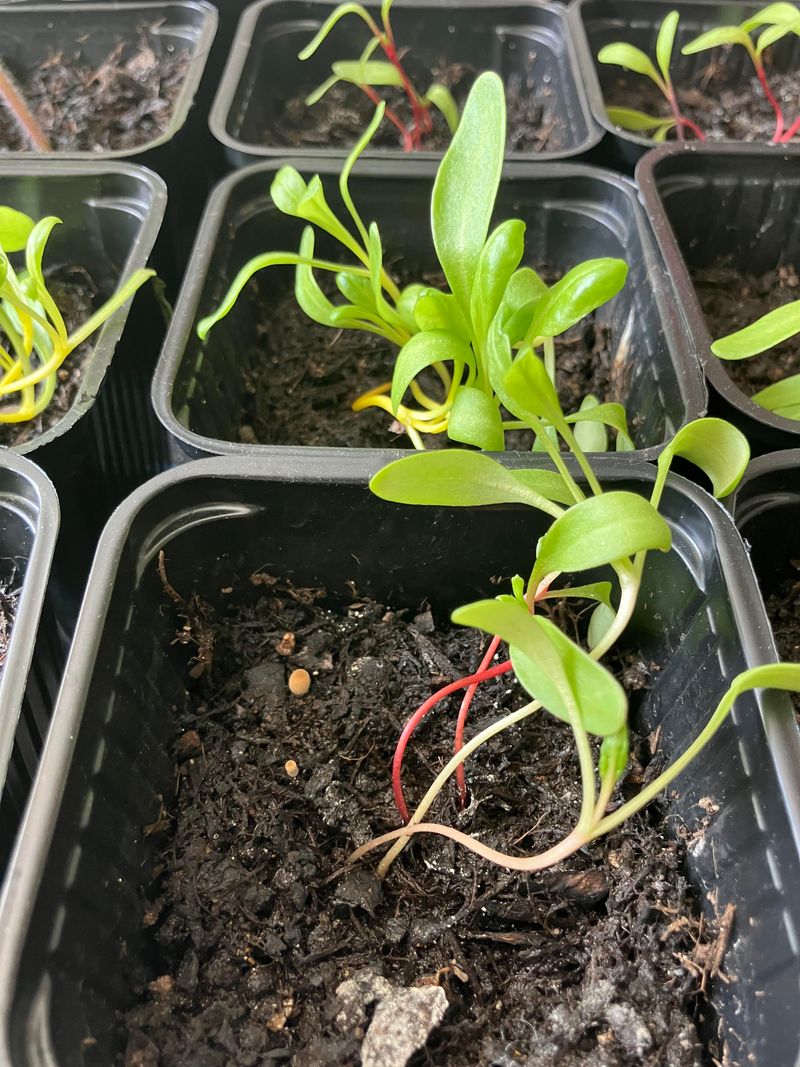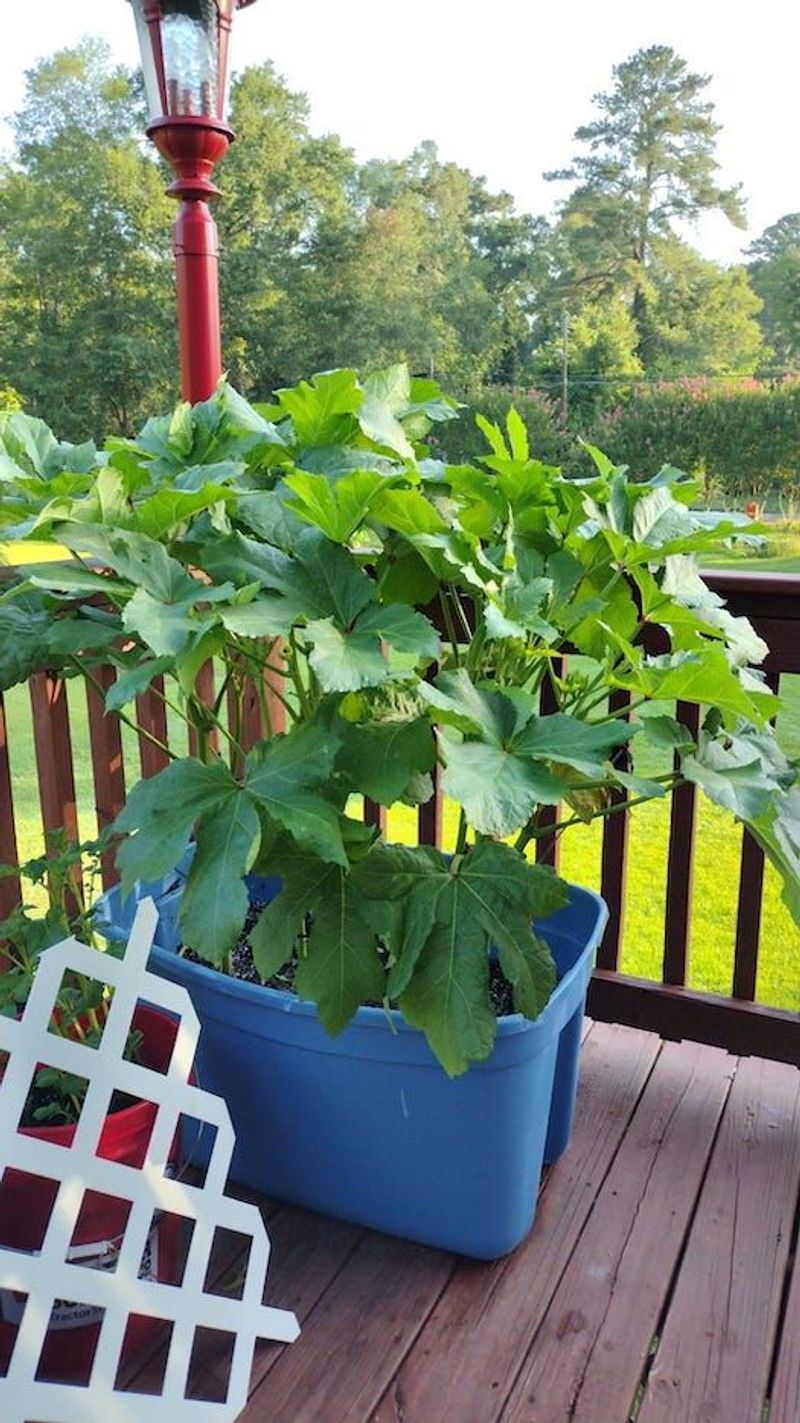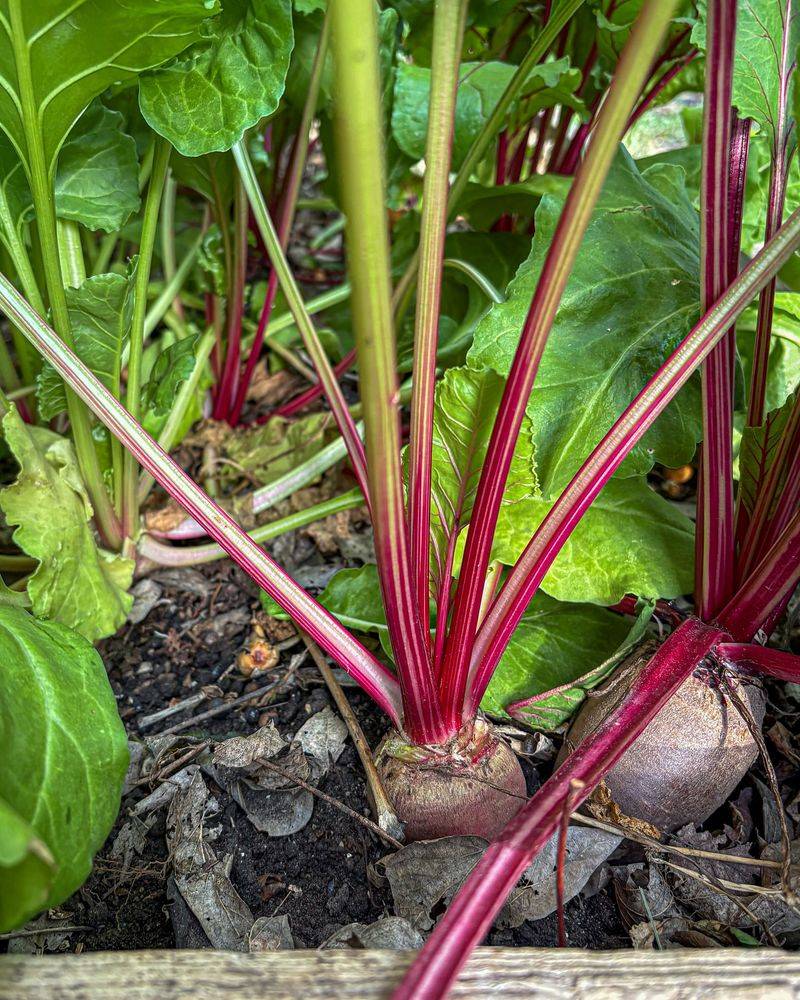Growing vegetables in containers opens up gardening possibilities for everyone, even if you only have a tiny patio or balcony. Pairing the right vegetables together in containers can boost your harvest and make the most of limited space.
Smart combinations help plants support each other, share nutrients efficiently, and even naturally deter pests.
1. Tomatoes and Basil: The Classic Duo
Tomatoes and basil don’t just taste great together on your plate—they’re perfect container companions too! Basil naturally repels tomato hornworms and other pests that might damage your tomato plants.
The aromatic oils in basil improve the flavor of tomatoes while tomatoes provide light shade for basil in hot summer months. Choose a deep 5-gallon container and place your tomato plant in the center with 2-3 basil plants around the edges.
2. Three Sisters in a Pot: Corn, Beans and Squash
Borrowed from Native American wisdom, this trio works beautifully even in container form. Corn grows tall to provide a natural trellis for climbing beans, while squash spreads along the container’s surface, creating living mulch.
The beans fix nitrogen in the soil, feeding hungry corn and squash. For this powerful combination, use a half-barrel or similarly large container at least 18 inches deep. Plant corn first, add beans when corn reaches 6 inches, then squash two weeks later.
3. Lettuce and Radish Speed Combo
Fast-growing radishes make perfect partners for loose-leaf lettuce varieties in shallow containers. While your lettuce is still developing, you can harvest the quick-growing radishes, which mature in just 3-4 weeks.
The radishes break up the soil as they grow, improving conditions for lettuce roots. Their peppery flavor also confuses pests that might otherwise munch on your lettuce. Use a wide, shallow container about 6 inches deep, and plant radish seeds between lettuce seedlings.
4. Vertical Cucumber and Dill Delight
Cucumbers grow upward on trellises, saving precious container space, while dill attracts beneficial insects that protect your cucumbers. Many gardeners don’t realize that dill improves cucumber flavor while cucumber’s climbing habit creates partial shade for dill.
The aromatic dill also confuses cucumber beetles, reducing pest problems naturally. Choose a 5-gallon container with a sturdy trellis. Plant cucumber seeds at the base of the trellis and scatter dill seeds throughout the remaining soil surface.
5. Pepper and Marigold Protection Partnership
Bell peppers thrive with marigold companions that naturally deter nematodes and other soil pests. The bright orange and yellow marigold flowers create a beautiful contrast against the glossy peppers while serving as a natural pest management system.
Marigolds’ strong scent masks the smell of peppers from potential pests. Their shallow roots won’t compete with your pepper plants. Use a 3-gallon container, placing one pepper plant in the center and 3-4 marigolds around the edge for maximum protection and visual appeal.
6. Strawberry and Chive Boundary
Strawberries and chives create a mutually beneficial relationship in hanging baskets or strawberry pots. Chives naturally repel aphids and other insects that commonly attack strawberry plants while adding vertical interest to the container.
Their mild onion scent confuses pests seeking sweet strawberries. The strawberries trail beautifully over container edges while chives grow upright in the center. Use a strawberry pot with multiple openings or a hanging basket, planting chives in the center and strawberries around the sides.
7. Eggplant and Thyme Combination
Eggplants develop better flavor when grown alongside aromatic thyme. The low-growing thyme creates a living mulch that retains moisture and suppresses weeds while deterring garden pests with its strong scent.
Thyme’s shallow roots won’t compete with eggplant’s deeper root system. As a bonus, both plants love similar soil conditions and watering schedules. Select a 5-gallon container and plant one eggplant in the center, surrounding it with 4-5 thyme plants that will cascade slightly over the container edges.
8. Carrots and Onions: Underground Allies
Carrot flies hate onions! This natural pest deterrent makes carrots and onions perfect container companions. The strong scent of onions masks the sweet smell of carrots that typically attracts carrot flies.
Their roots grow at different depths, utilizing container space efficiently. Onions need shallow soil while carrots grow deeper. Choose a container at least 12 inches deep and alternate rows of carrot seeds with green onion sets or small bulb onions around the perimeter.
9. Kale and Nasturtium Nutrient Boost
Kale’s deep green leaves contrast beautifully with bright nasturtium flowers in this powerhouse nutritional container. Nasturtiums act as a trap crop for aphids, keeping the pests away from your kale while providing edible flowers for your salads.
The shallow-rooted nasturtiums won’t compete with kale’s deeper roots. Both plants thrive in cooler weather, making this an excellent spring or fall container combination. Use a 12-inch deep container with one kale plant in the center and nasturtium seeds scattered around the edges to cascade down.
10. Bush Beans and Rosemary Aroma Shield
Bush beans produce higher yields when protected by aromatic rosemary. The strong pine-like scent of rosemary confuses bean beetles and other pests searching for tender bean plants.
Rosemary’s upright growth provides light shade during intense summer heat, preventing bean blossom drop. As a Mediterranean herb, rosemary’s drought tolerance means it won’t compete for water with your thirsty beans. Choose a 12-inch deep container, planting rosemary at one end and sowing bean seeds in the remaining space.
11. Zucchini and Nasturtium Space Savers
Compact zucchini varieties paired with trailing nasturtiums maximize vertical and horizontal container space. Nasturtiums naturally repel squash bugs and cucumber beetles that commonly attack zucchini plants.
Their bright flowers attract pollinators while creating a living mulch that keeps soil cool and moist. Both plants share similar soil and water requirements. Select a wide 10-gallon container, placing a bush-type zucchini in the center with nasturtium seeds planted around the edges to cascade down the sides.
12. Spinach and Garlic Pest Protection
Fall-planted garlic provides natural protection for spring spinach in this clever year-round container. Garlic’s strong odor deters leafminers and other insects that typically damage spinach leaves.
Plant garlic cloves around the container perimeter in fall. By spring, the young garlic shoots will be growing as you sow spinach seeds between them. Harvest the spinach before summer heat arrives, then allow the garlic to mature fully. Use a container at least 8 inches deep and 12 inches wide for this succession planting strategy.
13. Peas and Mint Cooling Combination
Spring peas climb upward while mint creates a cooling ground cover in this productive container duo. Mint’s strong scent confuses pea moths and other pests, while its spreading habit keeps the soil cool and moist for shallow-rooted peas.
The climbing peas make excellent use of vertical space when provided with a trellis or stakes. Be sure to contain the mint in its own area to prevent it from taking over. Use a 12-inch deep container with a trellis, planting mint on one side and pea seeds along the other.
14. Chard and Calendula Color Explosion
Rainbow chard’s vibrant stems paired with golden calendula flowers create a container that’s as beautiful as it is productive. Beyond their visual appeal, calendula flowers attract beneficial insects like ladybugs that feed on aphids that might attack your chard.
Calendula’s shallow roots won’t compete with chard’s deeper root system. Both plants tolerate partial shade, making this combination perfect for balconies that don’t get full sun. Use a 10-inch deep container, planting chard in the center and calendula seeds around the edges.
15. Dwarf Okra and Sweet Alyssum Partnership
Compact okra varieties reach upward while sweet alyssum creates a beautiful flowering carpet below in this heat-loving container combo. The tiny white alyssum flowers attract pollinators and beneficial insects that improve okra fruit set and quality.
Alyssum’s dense growth suppresses weeds and retains soil moisture, reducing the need for frequent watering. The contrast between okra’s large tropical leaves and alyssum’s delicate white flowers creates visual interest. Use a 5-gallon container, planting dwarf okra in the center with alyssum seeds scattered around the edges.
16. Beets and Sage: Root and Herb Magic
Beets develop sweeter roots when grown alongside aromatic sage in containers. Sage’s strong scent deters many common garden pests, while its silvery foliage creates beautiful contrast with beets’ deep red stems and green leaves.
Sage’s moderate water needs match well with beets, preventing overwatering that can dilute beet flavor. Their root systems occupy different soil depths, making efficient use of container space. Choose a container at least 10 inches deep, planting sage at one end and sowing beet seeds in rows at the other.


